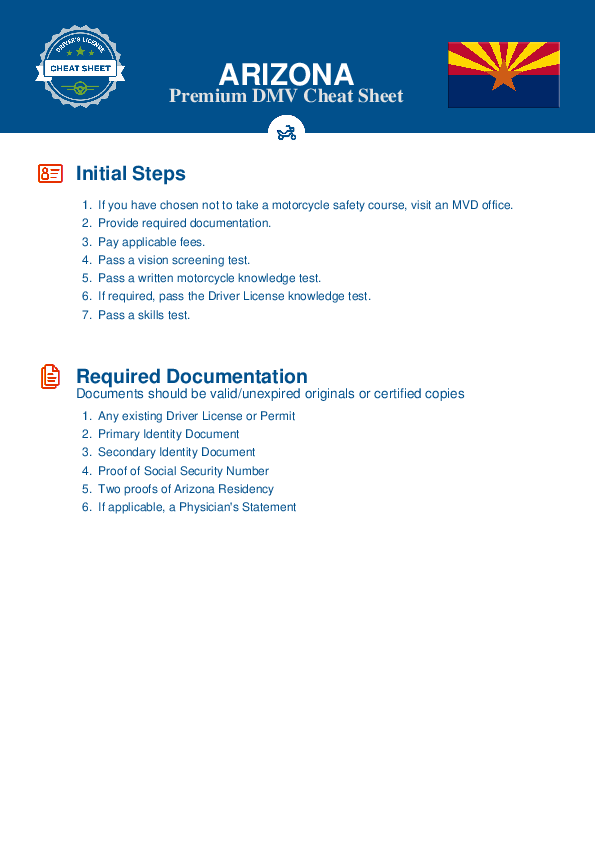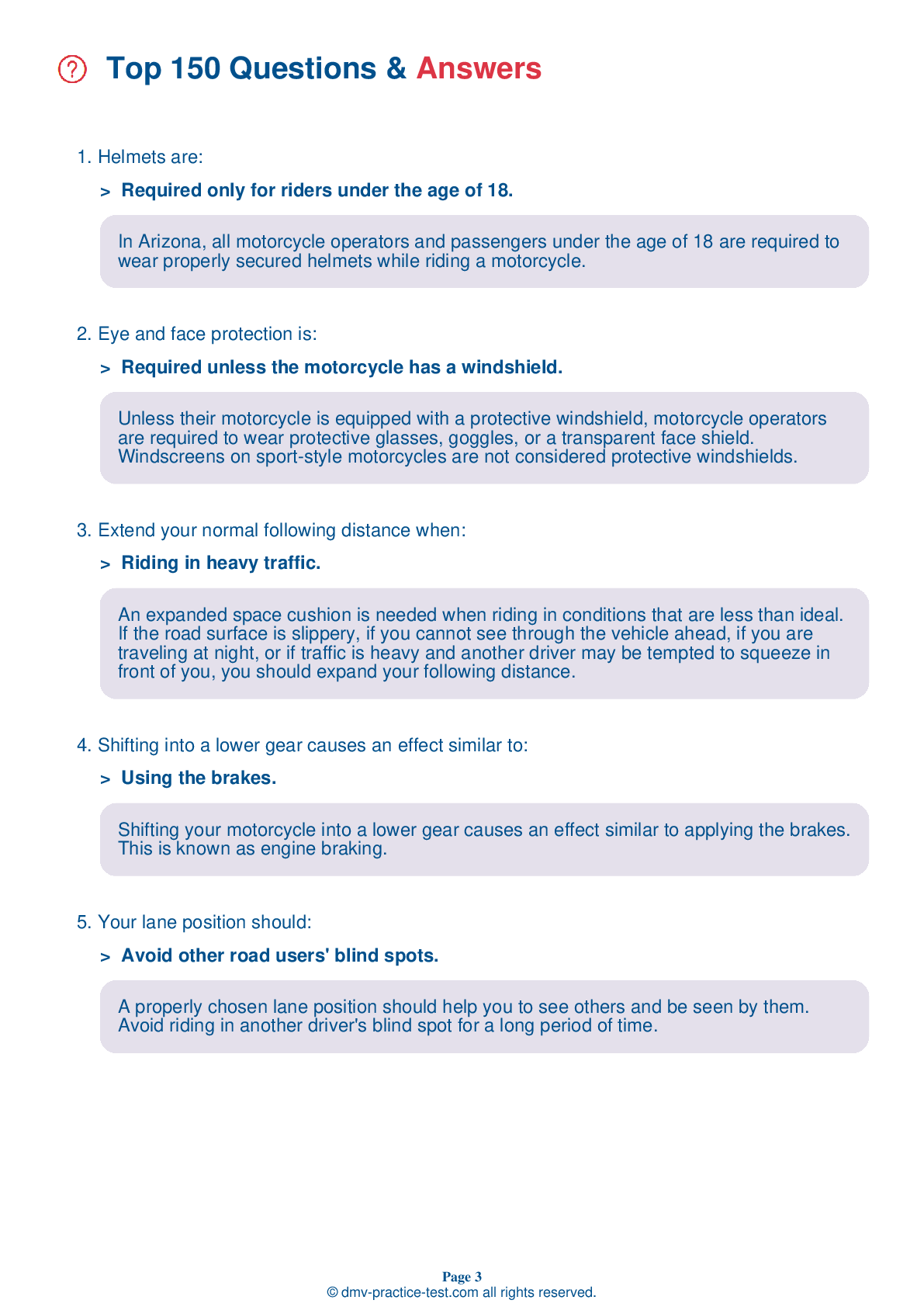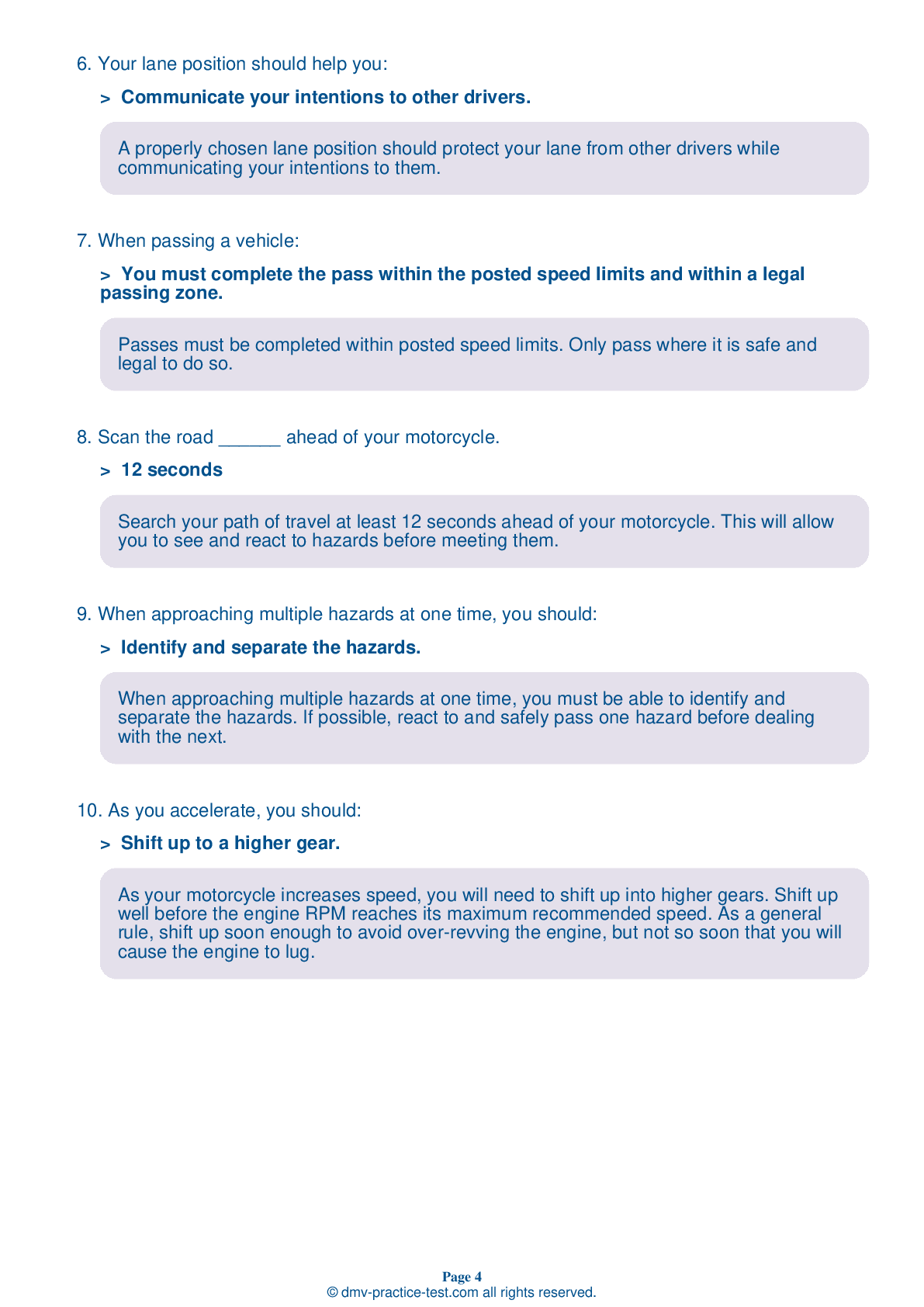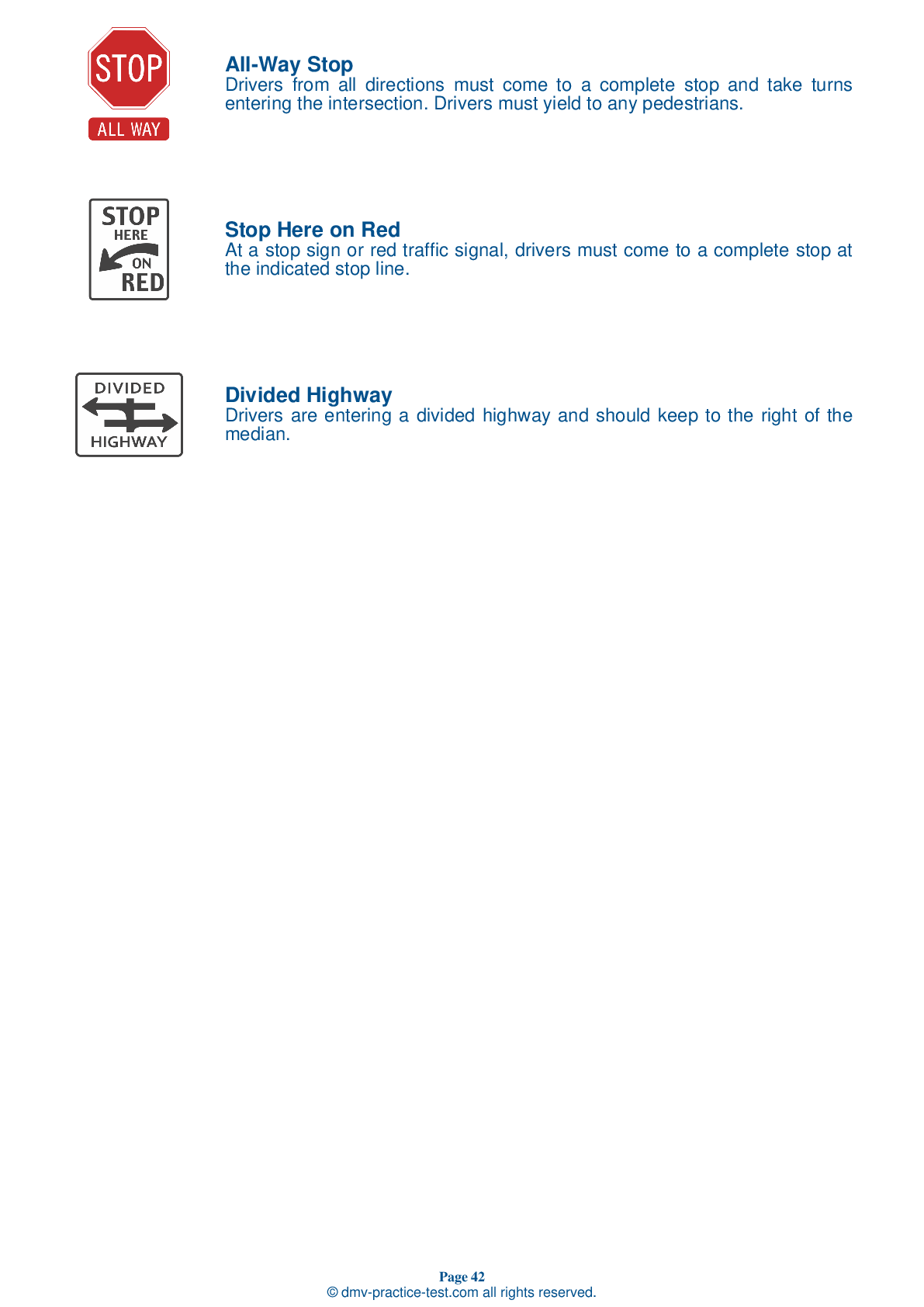Motorcycle Test | License AZ 2025 | FREE Online Practice! #10
Take this FREE motorcycle test (license in AZ 2025) to check your knowledge of the road rules. To improve your results, download a motorcycle handbook online, study theory, and practice for free on our website. Still worried about how to get a motorcycle license in Arizona in 2025? Check our website for more sample tests, train as much as possible, and boost your grades!
1 . When riding with a passenger, you should:
A motorcycle passenger needs to understand how to ensure a safe ride ride for both themselves and the operator. An operator should never assume the passenger already knows what to do. Give a passenger complete instructions before every ride.
2 . When approaching an uneven surface, such as a bump or pothole, you should rise slightly off of your seat:
When riding over an uneven surface, rising off of your seat will allow your joints to absorb some of the force of impact. This will make it less likely that the impact of the surface will throw you off of the motorcycle.
3 . If you must ride over an obstacle, you should:
If you are unable avoid an obstacle and must instead ride over it, slow down and approach the obstacle at as close to a 90-degree angle as possible. Keep your motorcycle straight up and down, if possible. Just before contact, roll off the throttle slightly to lighten the front end of the motorcycle.
4 . When traveling on a motorcycle with a sidecar, the passenger should ride:
If your motorcycle has a sidecar, it is best for your passenger to ride in the sidecar. They should keep their hands inside the sidecar at all times.
5 . When stopped behind another vehicle, you should:
You should stay well behind the vehicle in front of you, even when you are both stopped. This will give you room to escape if the vehicle backs up unexpectedly or if another vehicle approaches too quickly from behind.
6 . An engine will seize due to:
Engines seize when they are low on oil. Without oil, the engine’s moving parts cannot move smoothly against each other and the engine overheats.
7 . When passing another driver, you should:
Get out of another vehicle's blind spot as quickly as possible. When passing another vehicle, you should move into the passing lane and accelerate past the vehicle.
8 . Where is the rear brake pedal usually located?
The rear brake of a motorcycle is usually controlled by a pedal near the right footrest.
See the exact questions that will be on the 2025 Arizona DMV exam.
99.2% of people who use the cheat sheet pass the FIRST TIME
Jeneen was tired of paying $5/gallon. She got herself a scooter that required the motorcycle license. She studyed the motorcycle test cheat sheet and passed her test the next day!
Christopher tells us how he knew nothing prior to obtaining the motorcycle study guide, and he only got one question wrong because he clicked on the wrong answer by mistake.



